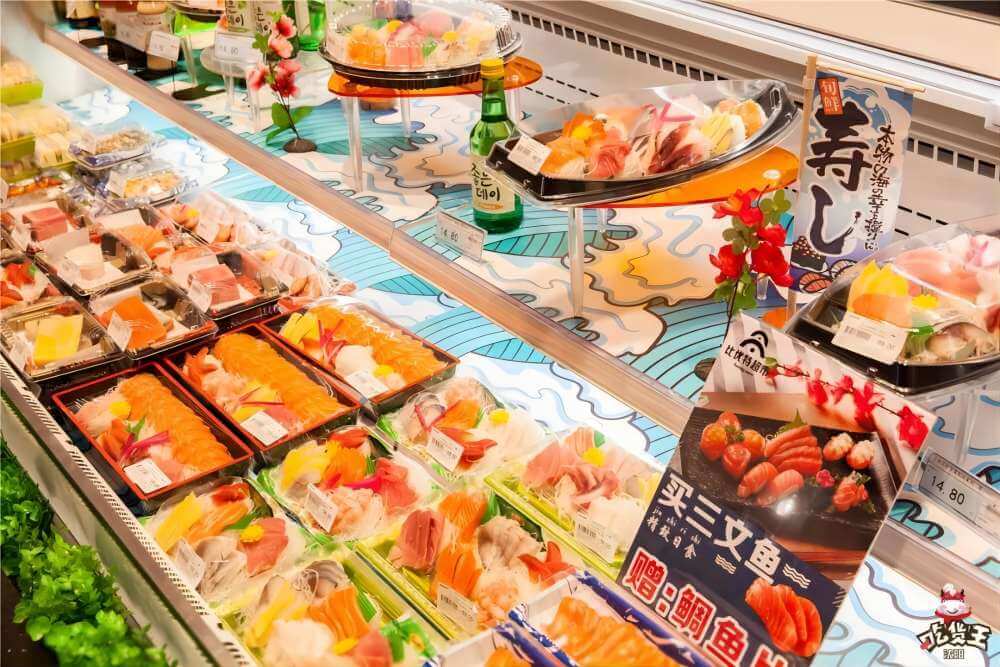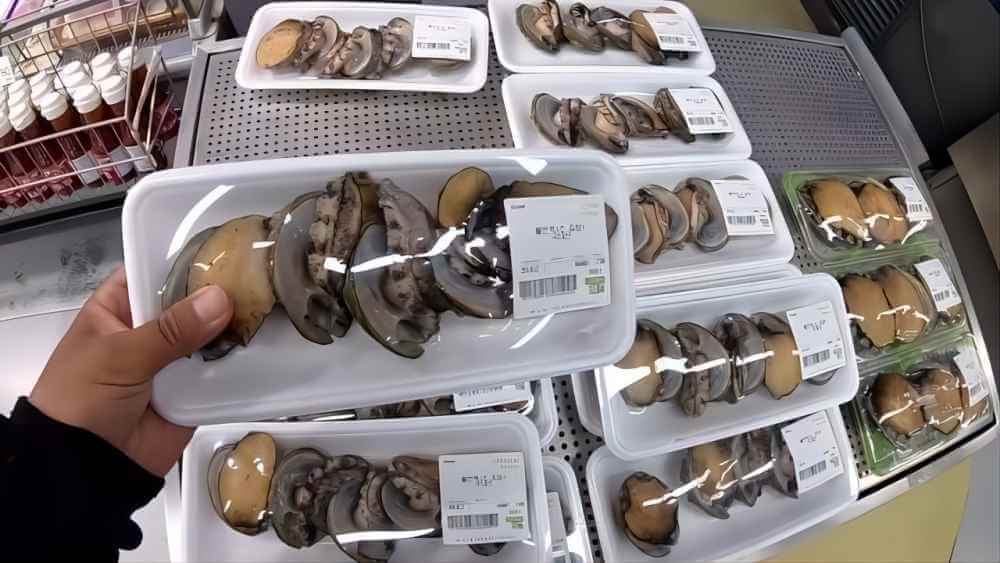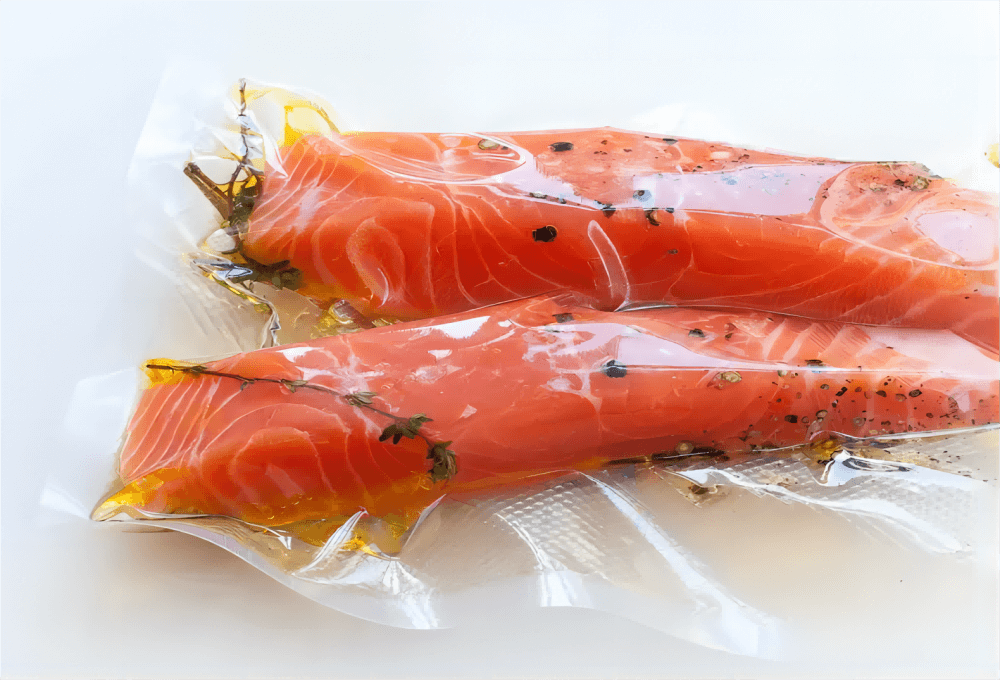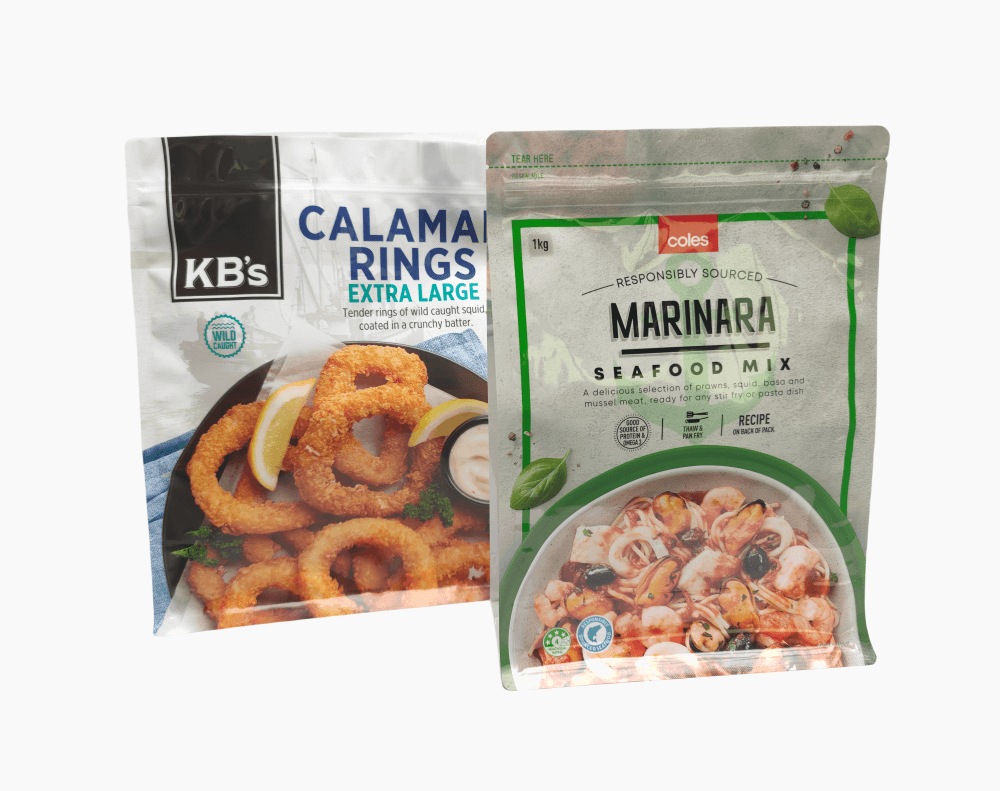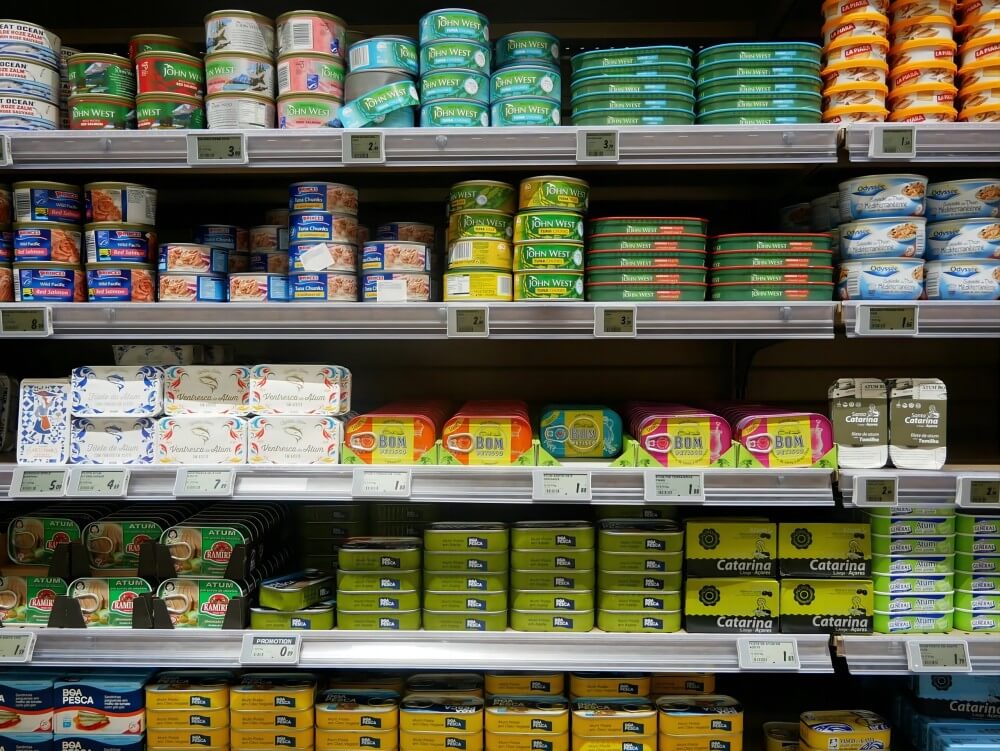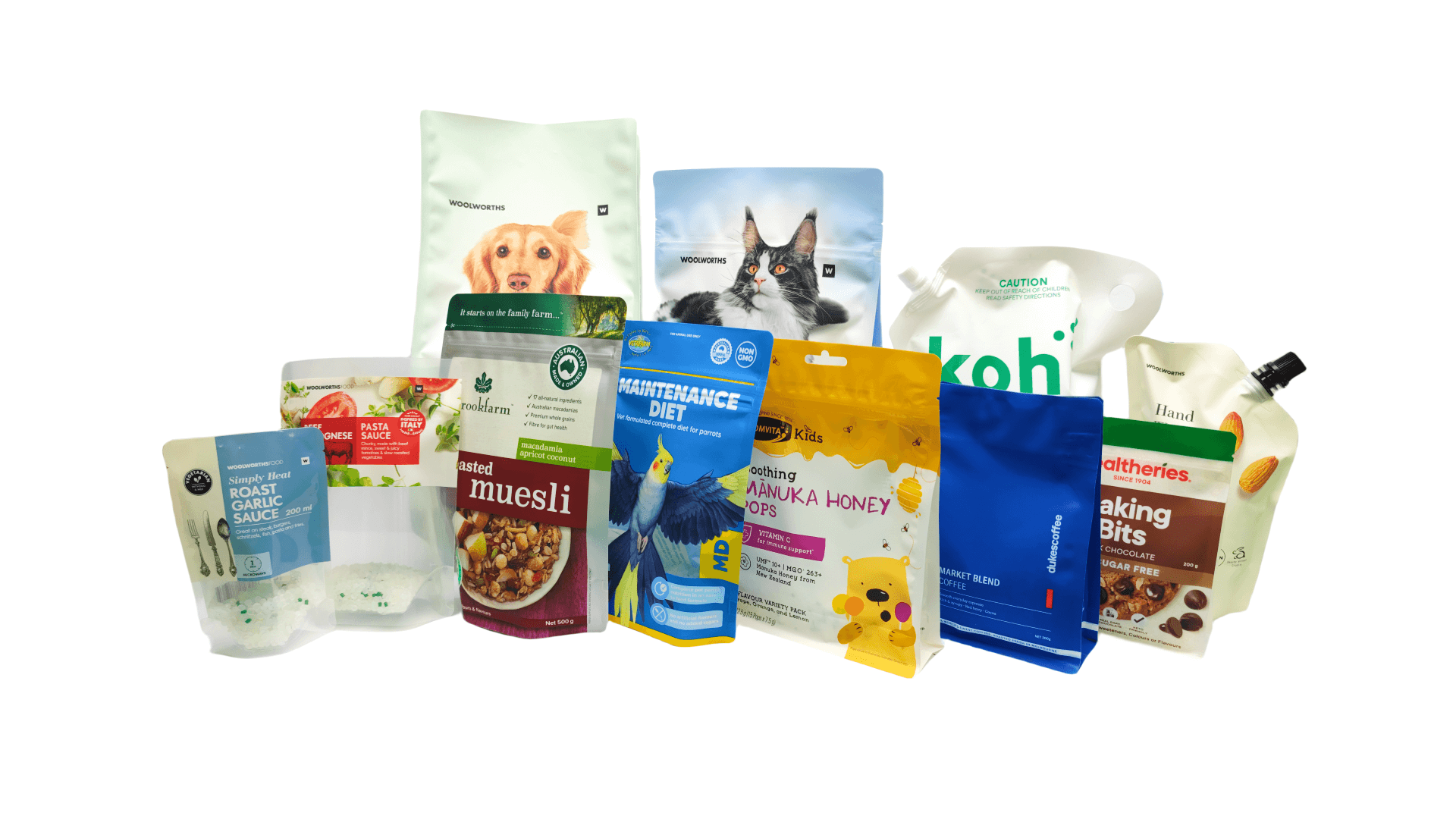6 Different Types of Seafood Packaging
What is Seafood Packaging?
Seafood packaging refers to the materials and methods used to package and store seafood products, such as fish, shellfish, shrimp, and crab. The primary goal of seafood packaging is to maintain the quality, freshness, and safety of the seafood from the time it is harvested or processed until it reaches the consumer.
There are several important factors to consider when packaging seafood:
- Protection: Seafood packaging should provide a protective barrier against physical damage, moisture, and contaminants. It helps prevent the seafood from being crushed, bruised, or exposed to harmful elements during transportation and storage.
- Freshness: Packaging plays a crucial role in preserving the freshness of seafood. It should be designed to minimize oxygen exposure, which can cause oxidation and spoilage. Vacuum packaging or modified atmosphere packaging (MAP) techniques are commonly used to extend the shelf life of seafood by reducing oxygen levels in the package.
- Hygiene and Safety: Packaging materials must meet strict hygiene and safety standards to ensure that the seafood remains safe for consumption. They should be food-grade, non-toxic, and resistant to chemical reactions with seafood. Additionally, proper labeling and information about handling, storage, and expiration dates are essential for consumer safety.
- Convenience: Packaging should be designed for convenience, both for the seafood industry and the end consumers. It should be easy to handle, transport, and store. Retail packages often include portioned sizes, resealable options, and clear labeling for easy identification.
6 Different Types of Seafood Packaging
There are various types of seafood packaging used in the industry, each serving different purposes and catering to specific seafood products. Common types of seafood packaging include:
Rigid Container Seafood Packaging
Rigid containers for seafood include plastic or polystyrene trays, cups, or boxes commonly used for packaging fresh seafood in supermarkets or fish markets.
- Plastic Trays:
Plastic trays usually with clear lids, are commonly used for packaging fresh seafood, such as fish fillets, shrimp, or scallops. They provide visibility and protection while allowing consumers to see the product. - Foam Trays:
Foam trays are lightweight and are often used for packaging delicate seafood items to prevent damage during transportation and handling. They are commonly used for items like oysters, clams, or mussels. - Plastic Boxes/Crates :
Plastic boxes/crates are used for bulk packaging for wholesale or industrial purposes. These packages are designed to withstand transportation and handling while ensuring the seafood remains protected.
Flexible Seafood Packaging
Flexible packaging includes vacuum-sealed bags, pouches, or shrink-wrapped films that provide an airtight seal to preserve freshness. Flexible packaging is often used for frozen seafood products.
- Vacuum-sealed Bags:
Vacuum-sealed bags are widely used for packaging frozen seafood products. They remove air from the package, reducing the risk of freezer burn and preserving the quality and freshness of the seafood. - Pouches:
Pouches are a popular packaging option for seafood due to their convenience, versatility, and ability to preserve the freshness and flavor of the seafood. - Shrink-wrapped Films:
Shrink-wrapped films are for individually wrapped portions: Frozen seafood products like fish fillets, shrimp, or crab legs are often individually wrapped in plastic or moisture-resistant material. This allows consumers to easily portion and thaw only the amount they need.
Canned Seafood Packaging
Canning is a popular packaging method for seafood, especially for products like tuna, sardines, or anchovies. The seafood is cooked, placed in metal cans, and sealed to ensure long shelf life and preservation. It is popular for its extended storage capabilities.
Boxes and Cartons
Corrugated cardboard boxes or cartons are commonly used for bulk packaging and transportation of seafood. These containers provide protection and can be stacked efficiently for shipping.
Modified Atmosphere Packaging (MAP)
MAP is a technique used for extending the shelf life of seafood. It involves replacing the air inside the package with a modified gas mixture, typically a combination of nitrogen, carbon dioxide, and oxygen. This controlled atmosphere helps inhibit bacterial growth and maintain product quality. MAP is commonly used for fresh and processed seafood products like smoked salmon or sushi.
Eco-Friendly Packaging
Sustainable packaging options are gaining popularity in the seafood industry. These include biodegradable or compostable materials made from plant-based sources, such as bioplastics or compostable films, and recyclable packaging. These eco-friendly options aim to reduce environmental impact and promote sustainability.
Different Seafood Packaging Design
It’s important to note that different seafood products may require specific packaging methods based on their characteristics, shelf life, and transportation needs. The choice of packaging depends on factors such as product type, storage requirements, distribution channels, and consumer preferences.
| Seafood Packaging | Packaging Solutions |
| Fresh Seafood Packaging |
|
| Frozen Seafood Packaging |
|
| Canned Seafood Packaging |
|
| Modified Atmosphere Packaging |
|
| Eco-Friendly Packaging |
|
| Bulk Packaging |
|
Different Types of Fish Packaging for Different Fish
There are several types of packaging methods and materials used to ensure the freshness, quality, and safety of the fish.
Fresh Fish Packaging
Fresh fish hasn’t undergone any significant processing. It is fish that is in its natural state, typically sold whole or as fillets, and is known for its optimal flavor, texture, and overall quality.
- Whole Fish in Ice: Fresh whole fish is often packed in ice to maintain its freshness and prevent spoilage. It is typically placed in a plastic bag or wrapped in plastic film to prevent direct contact with ice.
- Fillets and Steaks on Trays: Fresh fish fillets or portions are often arranged on trays made of food-grade materials, such as plastic or foam. The trays provide support and help maintain the shape and quality of the fish. They may be covered with plastic wrap or a lid to protect the fish from physical damage and contamination.
- Fish in Sealed Bags or Pouches: Some fresh fish is packaged in sealed bags or pouches made of food-grade plastic. The fish is placed in the bag, and the bag is sealed to create a protective barrier against air, moisture, and contaminants. This method helps to maintain the fish’s freshness and prevent cross-contamination.
- Modified Atmosphere Packaging (MAP): MAP involves packaging fresh fish in a gas mixture that helps extend its shelf life.
- Vacuum-sealed Bags: The fish is placed in the bag, and the air is removed using a vacuum sealer, creating a sealed and oxygen-free environment. Vacuum sealing helps to slow down the deterioration of the fish, maintain its texture and flavor, and extend its shelf life.
Frozen Fish Packaging
Frozen fish that has been subjected to freezing temperatures to preserve its freshness and extend its shelf life. Freezing is a common method used in the seafood industry to maintain the quality of fish for an extended period.
- Vacuum-sealed Bags: are commonly used for packaging frozen fish. Removing air from the package helps preserve the quality and prevent freezer burn during storage. Vacuum-sealed bags have longer shelf life, preservation of freshness, prevention of freezer burn, protection from contaminants, improved storage efficiency, and convenience for consumers.
- Individually Wrapped: Frozen fish products, such as fish fillets, are often individually wrapped in plastic or moisture-resistant material. This allows for easy portioning and prevents freezer burn. Frozen fish fillets are frequently wrapped on plastic or foam trays too.
- Freezer Bags or Zip-top Bags: Freezer-safe plastic bags with zip-top closures are frequently used for packaging frozen fish. The fish is placed in the bag, excess air is squeezed out, and the bag is sealed. It is important to use bags specifically designed for freezer storage to prevent freezer burn and maintain the quality of the fish.
Smoked Fish Packaging
Smoked fish have undergone a smoking process, where it is exposed to smoke from burning wood or other smoldering materials. This traditional preservation method imparts a distinct smoky flavor and aroma to the fish while also extending its shelf life that is easy to store.
- Vacuum-sealed bags: It is a popular packaging for fish.
- Modified atmosphere packaging (MAP): MAP involves packaging smoked fish in a gas mixture that helps extend its shelf life. MAP is commonly used for pre-packaged smoked fish found in supermarkets.
- Airtight containers: Smoked fish can be packaged in airtight containers made of food-grade materials, such as plastic or glass. These containers help seal in the flavor and prevent moisture loss, preserving the texture and taste of the smoked fish. Airtight containers are suitable for smaller quantities of smoked fish or for deli-style packaging.
- Wax paper or foil wrapping: Smoked fish can be individually wrapped in wax paper or aluminum foil. This method provides a protective layer that helps prevent moisture loss and maintain the flavor and texture of the fish. Wrapping each piece separately allows for easy portioning and handling.
- Pre-formed trays: Smoked fish fillets or pieces can be packaged in pre-formed trays made of plastic or foam. The fish is placed on the tray, which provides support and protection during storage and transportation. The trays are typically covered with a plastic film or lid to maintain a sealed environment.
- Boxed packaging: Some frozen fish products are packaged in cardboard boxes. The fish may be individually wrapped or placed in a sealed bag within the box. Boxed packaging is commonly used for larger quantities of frozen fish.
Canned Fish Packaging
Canning is a popular method for preserving fish, particularly species that are well-suited to the canning process.
Tuna, Sardines, Salmon, Mackerel, Anchovies, Herring, etc are widely packed in cans. Canned fish offers convenience, long shelf life, and versatility in various culinary applications.
Different Fish Packaging Design
The specific packaging design method chosen for fish depends on various factors such as the type of fish, whether it is fresh or frozen, the desired shelf life, distribution channels, and consumer preferences. The goal is to maintain the fish’s quality, prevent spoilage, and ensure it reaches consumers in the best possible condition.
| Fish | Packaging Solutions |
| Fresh Fish |
|
| Frozen Fish |
|
| Smoked Fish |
|
| Tuna, Sardines, Salmon, Mackerel, Anchovies, Herring… |
|
Just choose the right packaging solutions for your fish.
Start With KDW
+86 13559233681(Wechat, Whatsapp)
No1, Anbian Rd, Torch High-Tech Zone (XiangAn), Xiamen, Fujian, China

